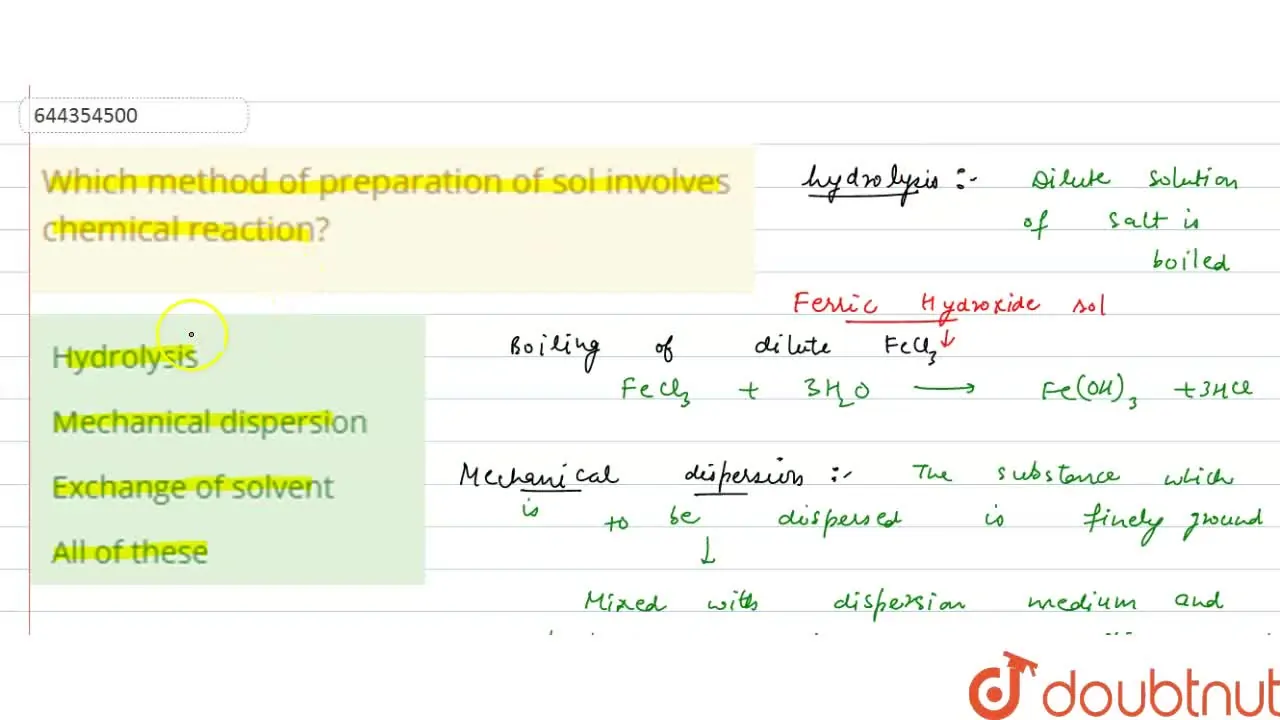Which method of preparation of sol involves
chemical reaction?
Hydrolysis
Mechanical dispersion
Exchange of solvent
All of these
The correct Answer is:A
Step by step video & image solution for Which method of preparation of sol involves chemical reaction? by Chemistry experts to help you in doubts & scoring excellent marks in Class 12 exams.
Related Playlists
- BOOK - AAKASH INSTITUTE ENGLISHCHAPTER - SURFACE CHEMISTRY EXERCISE - ASSIGNMENT SECTION - C11videos
SURFACE CHEMISTRY
- BOOK - AAKASH INSTITUTE ENGLISHCHAPTER - SURFACE CHEMISTRY EXERCISE - ASSIGNMENT SECTION - D3videos
SURFACE CHEMISTRY
- BOOK - AAKASH INSTITUTE ENGLISHCHAPTER - SURFACE CHEMISTRY EXERCISE - ASSIGNMENT SECTION - A51videos
SURFACE CHEMISTRY
- BOOK - AAKASH INSTITUTE ENGLISHCHAPTER - STRUCTURE OF ATOM EXERCISE - ASSIGNMENT ( SECTION -J) Aakash Challengers Questions12videos
STRUCTURE OF ATOM
- BOOK - AAKASH INSTITUTE ENGLISHCHAPTER - TEST 1EXERCISE - EXAMPLE134videos
TEST 1
Similar Questions
Which one of the following processes involve chemical reactions?
View SolutionAll reactions involving chemical decomposition are
View SolutionWhich of the following reaction is involved in the preparation of primary amines :
(i) Hofmann's bromamide reaction and
(ii) Gobriel phthalimide synthesisView SolutionSodium salt of which acid will be needed for the preparation of propane ? Write chemical equation for the reaction.
View SolutionAn industrial method of preparation of methanol is
View SolutionGive two chemical methods for the preparation of colloidal solutions.
View SolutionSodium salt of which acid will be needed for the the preparation of butane? Write chemical equation for the reaction.
View SolutionWrite a balanced chemical equation of the reaction involved in the preparation of ethene in the laboratory.
View SolutionWrite the chemical equations for reactions involved in the extraction of copper from copper pyrites.
View SolutionThe preparation of ethyl acetoacetate involves
View Solution


